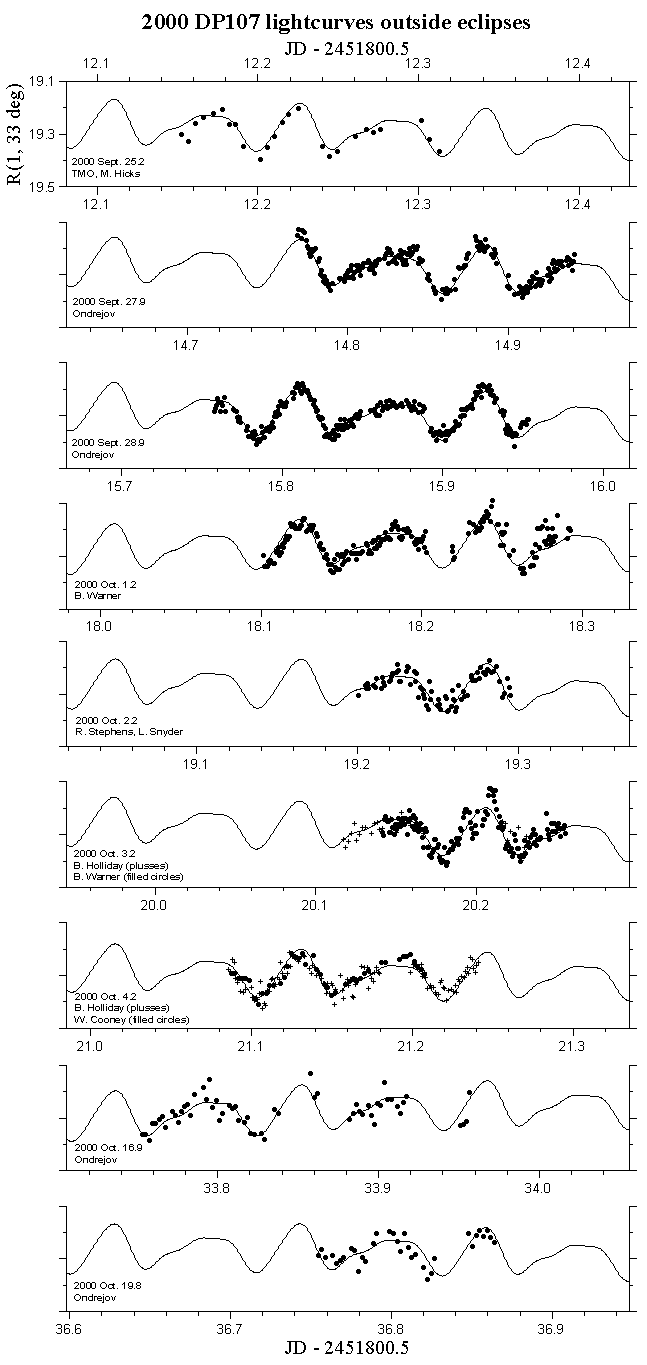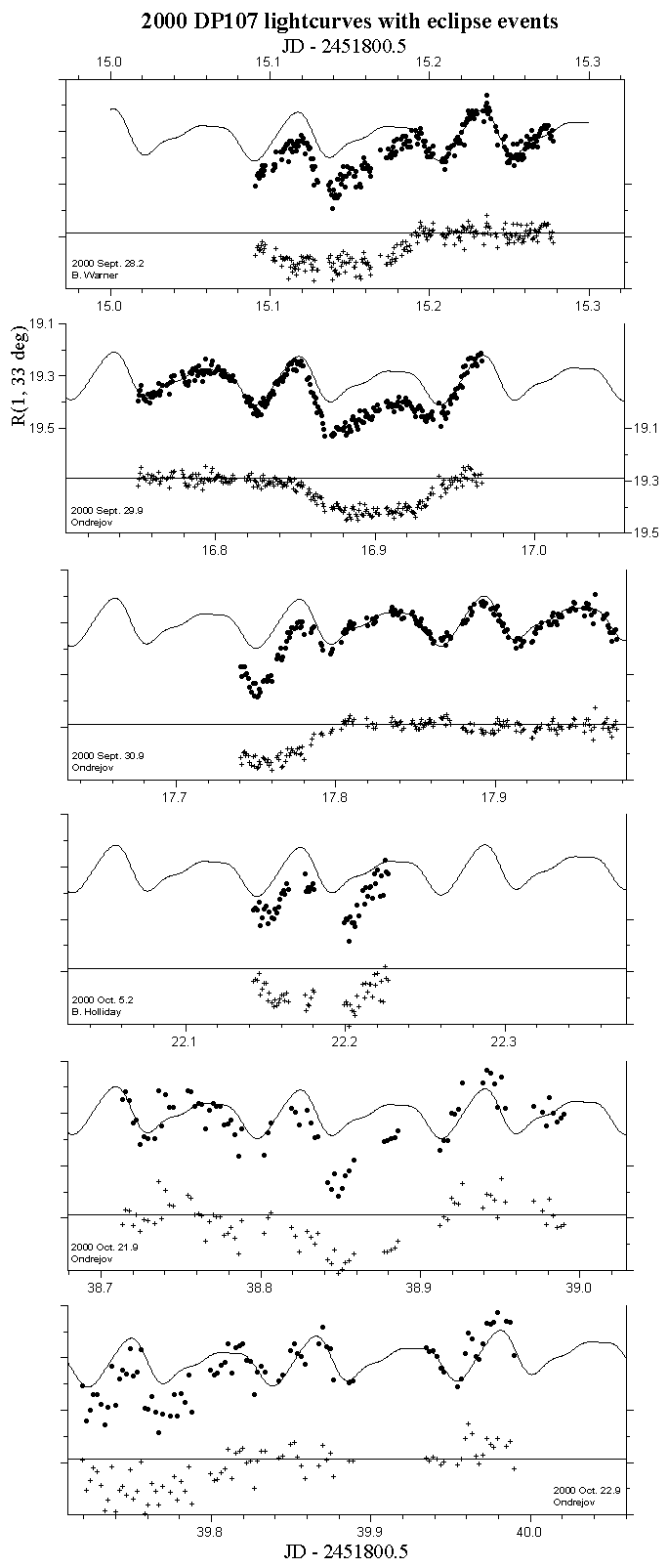Amplitude of the primary's rotation lightcurve: 0.19 mag (most signal in the 2nd harmonic; its amplitude is 0.13 mag) It indicates that the primary's shape is slightly elongated with equatorial axes ratio about 1.1 (assuming we had an equator-on aspect).
Orbital period (synodic): 42.23 +/- 0.04 h
The secondary-to-primary mean diameter ratio is 0.38 +/- 0.03. (This estimate is based on some assumptions, such as that the event detected on September 29.9 was a total secondary eclipse and that the two bodies have a same albedo.)
Amplitude of the long-period lightcurve component outside the eclipse minima: about 0.06 mag. It is interpreted as being caused by a synchronous rotation of the secondary that is somewhat elongated (axes ratio 1.2 +/- 0.1). The secondary showed a maximum brightness at times about in the middle between the eclipse events, at the mean anomaly about 90/270 deg. (I define the mean anomaly to be 0/180 deg at the times of the eclipse events.)
Semi-major axis of the mutual orbit - to be constrained later on.
Eccentricity - to be constrained later on; appears to be small.
Absolute magnitude (H) and slope parameter (G): 18.09 +/- 0.11, 0.04 +/- 0.05
Color indices: V-R = 0.388 +/-0.013, B-R = 1.088 +/-0.019,
U-R = 1.366 +/-0.025, R-I = 0.329 +/-0.011. The colors (measured
by M. Hicks on September 25.2) show that the asteroid is spectrally
flat, consistent with a C-type.
Figure 1 shows the short-period lightcurve component (the rotation lightcurve of the primary).
Figure 2 shows the long-period lightcurve component. The deep minima are mutual eclipse events, the small variation outside the eclipses is interpreted as rotation lightcurve of the secondary. Figures 3 and 4 show the eclipse minima in detail.
Note: The available optical observations are insufficient to resolve
if we see occultations or eclipses. Thus, I could write "occultation/eclipse"
throughout this page where there might actually be just occultations or just
eclipse. A combination with radar observations should resolve the ambiguity
- According to J.-L. Margot (personal communication) we probably saw eclipses,
thus I call the events "eclipses" throughout this page.
The term "primary event" corresponds to the primary behind the secondary,
the opposite is valid for a "secondary event" (see Pravec et al. 2000a).
The individual nightly lightcurves are presented in Figs. 5 and 6. The quality of the observations varied: The best data have errors 0.01-0.02 mag, the poorest data from four nights during October 16.9-22.9 (when the asteroid was about V=17) have errors around 0.04 mag but are still useful and show that the features observed during September 25-October 5 were still present there a few weeks later.
The estimated parameters of the binary system are strikingly similar to parameters of other known binary NEAs (see Pravec et al. 2000a for their list.)






Ostro S. J., J.-L. Margot, M. C. Nolan, L. A. M. Benner, R. F. Jurgens, and J. D. Giorgini 2000. 2000 DP107. IAU Circular 7496.
Pravec, P., P. Kusnirak, M. Hicks, B. Holliday, and B. Warner 2000b. 2000 DP107. IAU Circular 7504.
Pravec, P., L. Sarounova, D. L. Rabinowitz, M. D. Hicks, M. Wolf,
Yu. N. Krugly, F. P. Velichko, V. G. Shevchenko, V. G. Chiorny,
N. M. Gaftonyuk, and G. Genevier 2000a. Two-period lightcurves
of 1996 FG3, 1998 PG and (5407) 1992 AX: One probable and two
possible binary asteroids. Icarus , 146 , 190-203
Back to the Ondrejov NEO program page.